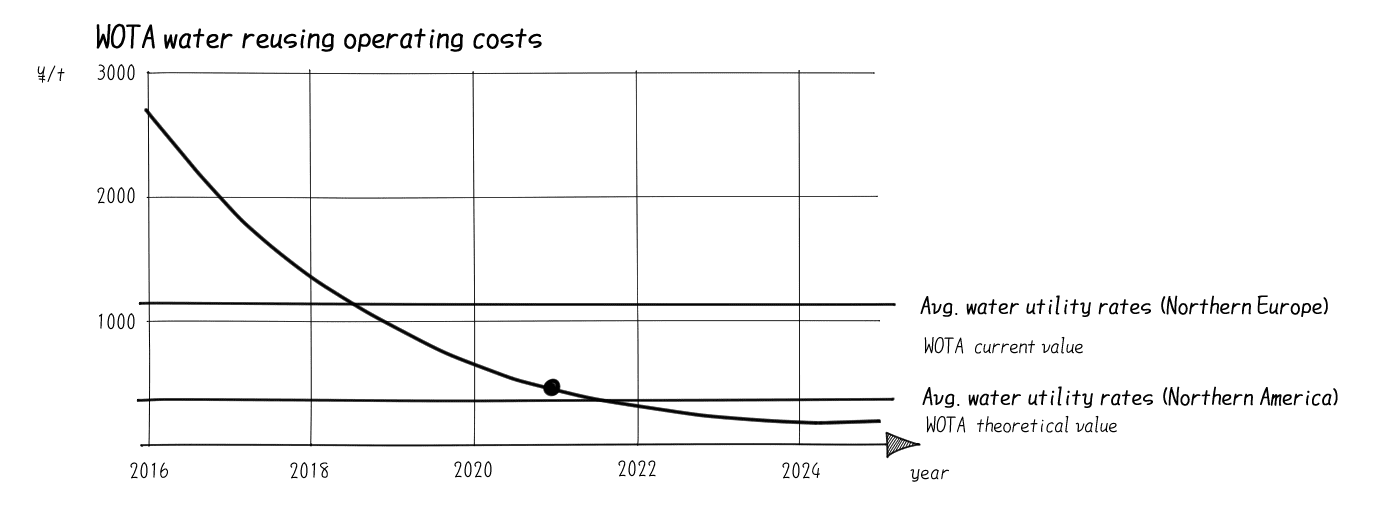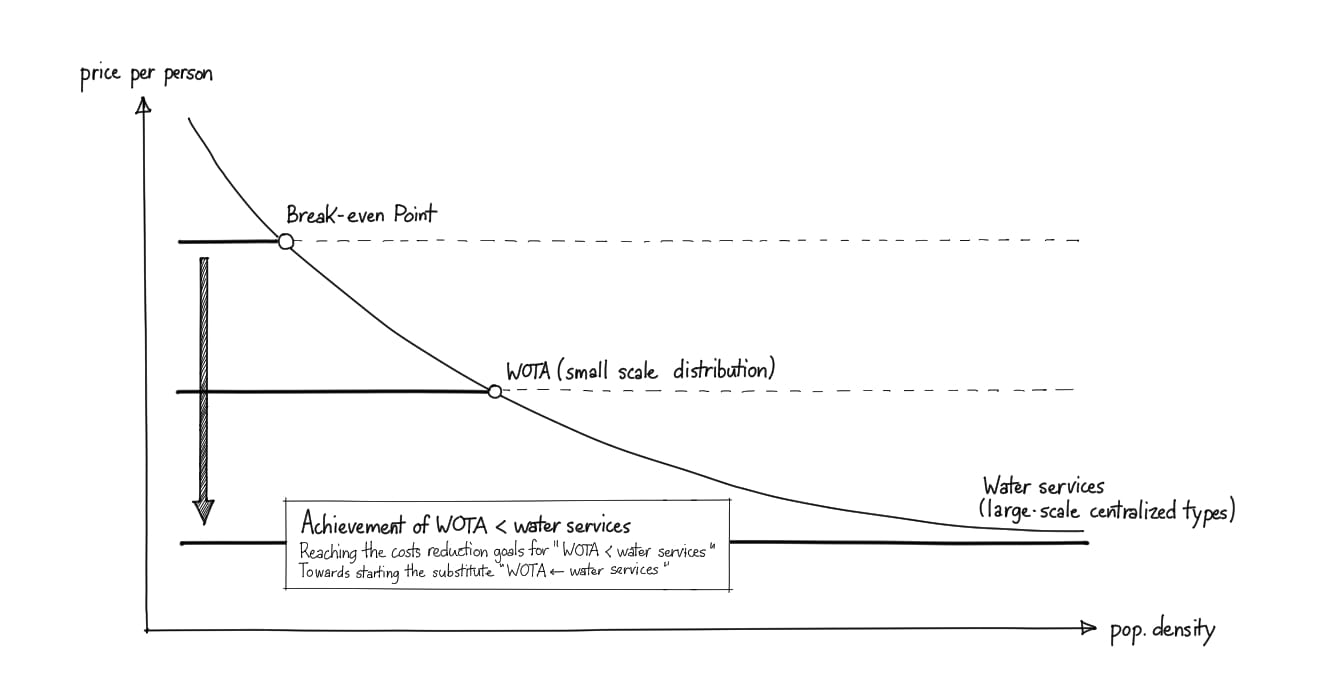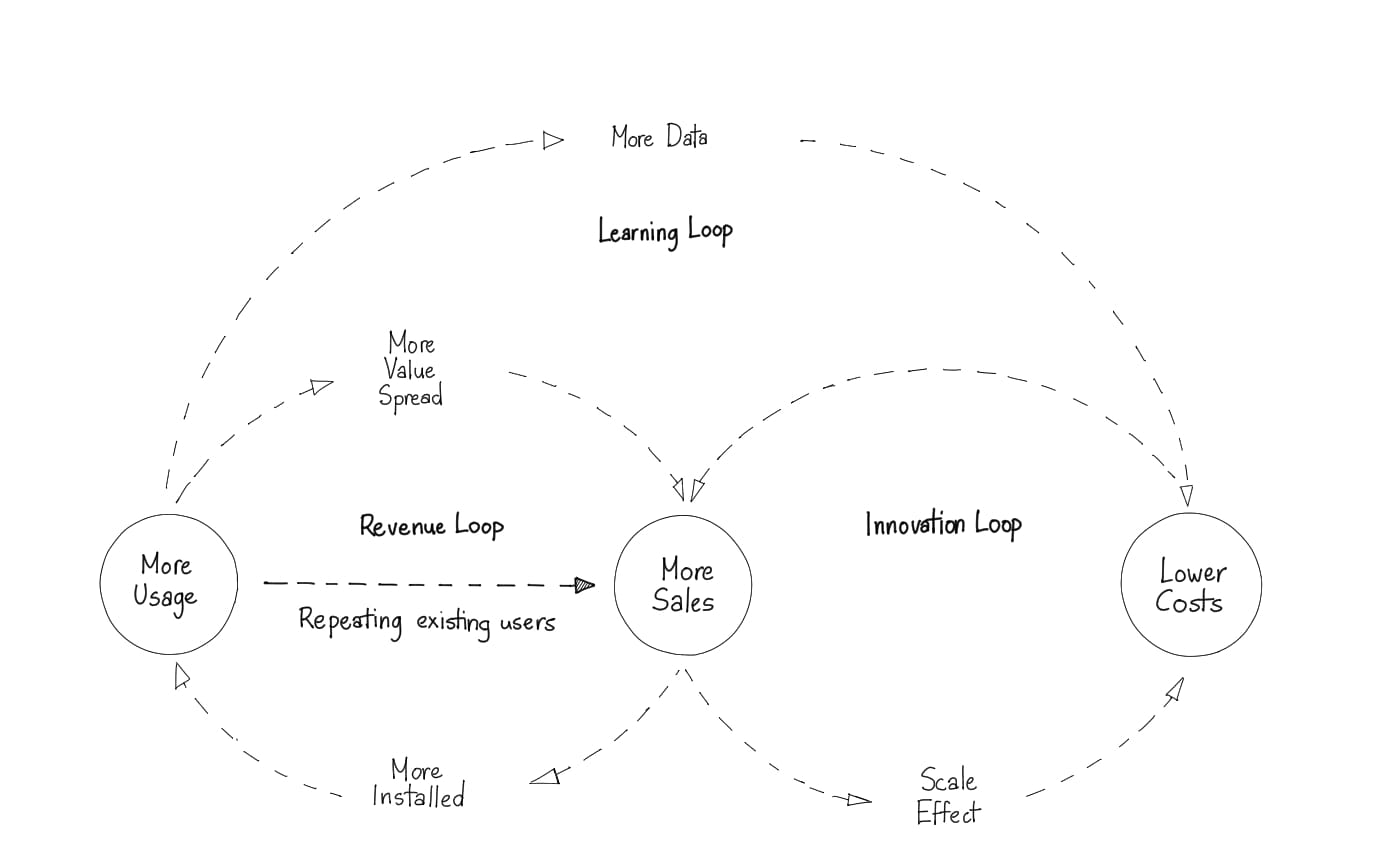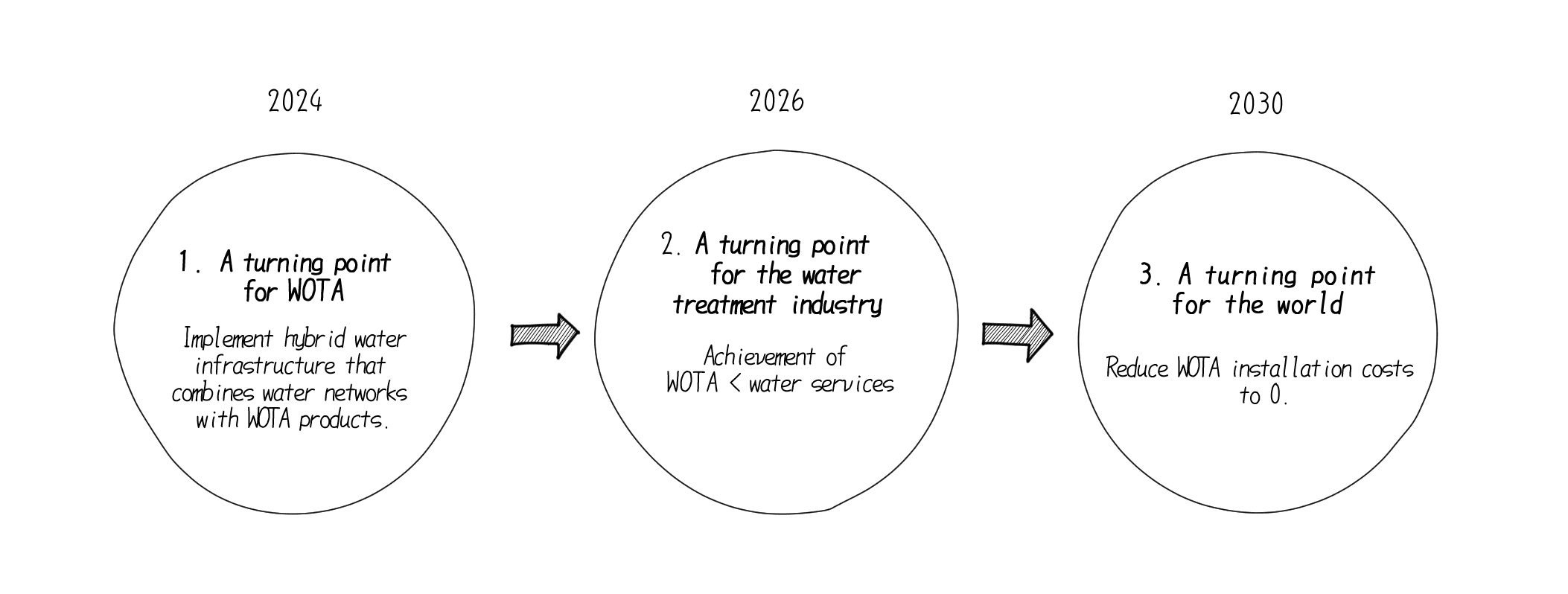WOTA’s Master Plan
One of humanity’s most pressing issues is the supply of fresh water, and WOTA exists to provide solutions to this problem. But what exactly does that involve? Let us explain.
Our purpose
Whenever we use water, we produce wastewater. As its name implies, this water simply goes to waste, and can even pollute the fresh water sources where the water came from in the first place. If there was a way to convert wastewater into reusable water, it would solve a huge number of water-related problems, such as water shortages and pollution. Our purpose is to ease society off its dependence on large-scale centralized infrastructure and accelerate the transition towards small-scale, decentralized Water reuse society.
Transitioning from large-scale centralized infrastructure to small-scale, decentralized infrastructure
In the 20th century, essential utilities were operated through large-scale centralized infrastructure; starting this century, we’ve been transitioning towards using small-scale, decentralized infrastructure. As infrastructure has grown small-scale and more personalized, developers have become more innovative in providing us with many quality-of-life improvements: for example, being able to carry a communication device in our pockets, or becoming self-sufficient in the energy we consume at home through the use of a solar electric system.
Large-scale centralized infrastructure needs to cover an entire city—some with populations in the millions—and can take decades to build. Only after that long span of time can the network’s backers begin to recover their investment. On the other hand: small-scale, decentralized infrastructure can be built for as few as one person and can be completed in as little as a day. You get your money’s worth in just a few years, just like with any ordinary household appliance.
Let’s look at it another way. We’re basically moving away from a construction industry model, where every project has a different life cycle, to a manufacturing industry model, where the life cycle of every product has been standardized. This transition creates fundamental improvements in infrastructure efficiency.
Small-scale, decentralized water reuse society - a society with widespread small-scale, decentralized water reuse systems
What do we need to do to encourage Small-scale, decentralized water reuse society - a society with widespread small-scale, decentralized water reuse systems? First, we need water reuse facilities that are both compact and highly efficient. WOTA’s first product was the WOTA BOX, a portable water reuse system capable of reuse over 98% of wastewater—well above the 60-80% achieved by water reuse facilities installed aboard space stations. What water infrastructure requires a city-wide grid to do, the WOTA BOX does through a tiny, 0.25 m3 compartment.
With WOTA BOX, you can reuse used water in your home, so you can enjoy a continuous water supply even without being connected to a water network. In practice, this means using over 50 times less water than usual. Imagine if everyone started using a WOTA BOX—it would instantly solve any water shortage problems, dramatically reduce the amount of wastewater we produce, and minimize damage to the environment.
Autonomous water treatment
WOTA’s core technology is autonomous water treatment. In the past, water treatment was a painstakingly manual process that could only be mastered through years of experience. WOTA offers that mastery in a water treatment device that is hundreds of thousands of times small-scale than conventional water treatment plant, courtesy of our own patented sensors and AI technologies. A great deal of effort has gone into achieving a high level of precision in our autonomous water treatment process.
R&D departments in the water treatment field used to focus on improving the quality of the filters, chemicals, microorganisms, and other components required for treating water. Our focus at WOTA is entirely on instrumentation and computer science—and that’s how we ended up creating a revolution in water treatment. What we provide is essentially an operating system for water treatment. In the future, water treatment plants around the world may be fully automating their processes using our patented water treatment OS.
One crucial advantage offered by this OS is that it allows for dynamic control of the process. In water treatment, both the quality of the water (input) and the condition of the components used to treat the water (commands) are variable. To ensure a specific output (water treated to a high quality) when the input and commands are variable, a water treatment system that can dynamically control the process is required. Just as autonomous driving systems can respond flexibly to changes in the road and the presence of other vehicles, WOTA’s autonomous water treatment process can fluidly adapt to variable conditions.
Cost remains a major reason why water reusing has not become widely available. With our autonomous technology, we’ve cut the cost of water reusing by about 93%.
Our next step
We’d like nothing more than for WOTA products to spread around the world. There’s just one problem: we need to be able to offer operating costs competitive with water utility rates.
Right now, the cost of operating WOTA water treatment products is lower than water utility rates in Northern Europe (10-12 USD/t) but higher than rates in North America (4-5 USD/t). Our goal is to lower our costs to 2.2 USD/t, which would make WOTA products extremely competitive. We would be able to promote the products as a sensible, money-saving choice in markets around the world.

The more users we have, the quicker we can solve our water problems
WOTA’s water reusing system is designed so that the cost per user decreases as the user base increases. In other words, more sales and more usage means lower costs.

As with all new technology, the unit cost will initially remain high until the production process has been optimized. As a rapidly growing technology company, we want to be able to deliver the next product to the market at as low a cost as possible. That’s why we’ve directed all our free cashflow towards R&D. By purchasing a WOTA product, you’re helping us raise the funds we need to lower the unit cost of our products. With more sales, it will be easier for us to promote WOTA products in more markets as a sensible, money-saving alternative to water infrastructure – which will ultimately help society transition towards using small-scale, decentralized water reuse systems.
With more usage of these initial WOTA products, we’ll be able to gather crucial data that will help us take our autonomous technologies to the next level. Eventually, this will lead to lower costs, both for WOTA and for the consumer. The more users we get, the more markets we can tap into, which will help us gain even more users. By repeating this loop, we can accelerate our transition into a society that gets its water from small-scale, decentralized water reusing systems.

Here’s what our master plan looks like:
2024: Implement hybrid water infrastructure that combines water networks with WOTA products.
2026: Drop WOTA operating costs below water utility rates to demonstrate feasibility of replacing water infrastructure with WOTA products.
2030: Reduce WOTA initial installation costs to 0.
